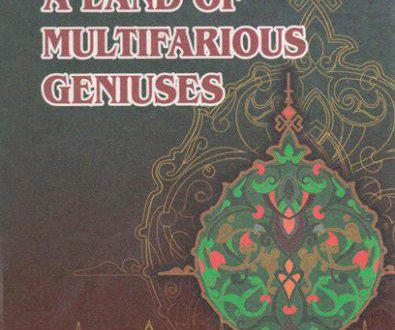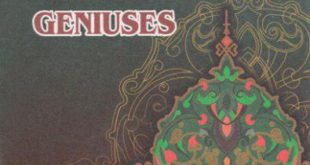Abu Bakr Muhammad ibn Ahmad ash-Shashi won great fame and respect in the opinion of his teachers. Perhaps it is because of his scientific potential that after graduating Nizamiya Madrasah in Baghdad, he was appointed as Head Master of the same madrasah.
In Baghdad sheikh, imam, senior lawyer and qazi (judge) of the city Abulmufazzal Yahya ibn Ali ibn Abdulaziz ibn Ali ibn al-Husain al-Qurashi al-Damashqi (died in 534) studied law and learned Hadiths from Abu Bakr Muhammad ibn Ahmad ash-Shashi. Moreover, such well-known scholars as Sheikh, Imam, Mufti Abu-l-Hasan Muhammad ibn Abulbaqa al-Mubarak al-Baghdadi, Imam, Expert in Hadiths, Hafiz, Mufti, Sheikh ul-Islam Abu Tahir Ahmad ibn Muhammad ibn Ibrahim al-Isfakhani studied law from him. A well-known expert in the Islamic sciences Mufti Abulabbas Ahmad ibn Salama ibn Ubaydulla ibn ar-Rutabi (died in 527 in the month of Rajab in Baghdad) was Abu Bakr Muhammad ibn Ahmad ash-Shashi’s close friend and servant.
Accompanying his teacher Abu Is’haq Shirazi during his visit to Nishapur, Abu Bakr Muhammad ibn Ahmad ash-Shashi attended the heated debates on the Islamic sciences and became known among scholars. Coming back to Baghdad after his teacher’s death (476/1083), Abu Bakr Muhammad ibn Ahmad ash-Shashi became the leader of lawyers of the Shafi’i order and was appointed as Head Master of the madrasah.
As the sources confirm, when he first entered the auditorium to deliver a lecture instead of his master, he took the seat usually occupied by his master Abu Is’haq Shirazi and read the verses of the Arabic poet Abu Tammam (788-846). Then had the students write the lines of the following content: “When the seats are empty, though nobody has elected me I became a Head Master. But the fact that I was left alone by the elderly masters is a great sorrow for me”. He repeated these lines and had the students read them for several times and took tears in his eyes in commemoration of his master saying “Is it my turn to occupy the seats of my master?” and couldn’t help crying.
Abu Bakr Muhammad ibn Ahmad Shashi was a great- lawyer and in this field, he created some precious books. A historian Hajji Khalifa writes in his book “Kashf az-zunun” the following lines about him: “The author of the book “Hilyat al-ulama fi mazahib al-fuqaha” (The Peculiarities of the Scholars in the Order of Lawyers) is known as Sheikh Imam Abu Bakr Muhammad ibn Ahmad ibn al-Qaffal ash-Shashi (died in 567) al-Mustazhiri”. Relying on the information from the book “Kashf az-zunun”, an orientalist from Tashkent A. Nasirov writes the following: “It becomes clear that Mustazhiri was one of the generations of Qaffal ash-Shashi”. Moreover, in his book “Mu’jam al-Buldan”, Yaqut al-Hamavi states that the author of the book “Targhib fi-l-furu” (Arising Interest in Furu) was Fakhr al-Islam Abu Bakr Muhammad ibn Ahmad al-Qaffal ash-Shashi who died in 507. In most of the sources, he is mentioned with the titles “Fakhr al-Islam”, “Mustazhiri”, “Sheikh”, “Imam” but none of them reminds the idea that he had something to do with the dynasty of Qaffal ash-Shashi.
Thus, Abu Bakr Muhammad ibn Ahmad Shashi’s greatest book is his “Hilyat al-ulama”. It was devoted to al-Mustazhir Billah (died in 512/1118), the Caliph from the dynasty of the Abbasids. The book was rather big in size and approved by Mustazhir, therefore it is used with the honourable title “Mustazhiri”. Due to his book, Abu Bakr Muhammad ibn Ahmad Shashi became famous with the penname “Mustazhiri” and it often follows his family name in the historical sources.
As Hajji Khalifa informs us, Abu Bakr Muhammad ibn Ahmad Shashi often used to address the disagreements among the scholars and tried to settle them in an unbiased manner and later wrote a special book on this matter under the title of “Al-Mu’tamad” (Reliable). Full title of this book sounds as “Al-Mu’tamad fi furu’i ash-Shafi’iya” (A Reliable Book on the Furu’s of Shafi’iya) which was written without commentaries like the book “Hilyat al-ulama”.
It is best known that the role of Imam ash-Shafi’i (died in 820) is incomparable in the development of the Islamic law. He was the first to define the main notions and signs of law in his book titled as “Ar-Risalah” and thus founded the bases of the science “Usui al-Fiqh”. As has been acknowledged by Professor A. Saidov, “One of the founders of law of the Sunni order Abu Abdullah Muhammad ibn Idris ibn Abbas ibn Usman Shafi’i Hashimi Qurashi made a great contribution to the formation of independent Islamic law”.
To the list of followers of Shafi’iya who had fame in this field during the following centuries, we may include the name of Abu Is’haq Ibrahim ash-Shirazi (died in 1083). Vizier Nizam al-Mulk made orders to build a Nizamiya Madrasah in Baghdad especially for him. The philosopher and lawyer Abu Hamid al-Ghazzali (died in 1111) and an encyclopaedic scholar Jalaluddin as-Suyuti were also his followers and disciples.
 Imom Buxoriy xalqaro ilmiy-tadqiqot markazi bukhari.uz
Imom Buxoriy xalqaro ilmiy-tadqiqot markazi bukhari.uz










